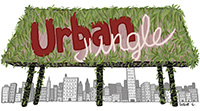“Small-scale nature,” “little nature,” and “mundane nature” — these are the terms science educators use to elicit excitement from kids who take part in camps and internships at the Phipps Conservatory and Botanical Gardens in Pittsburgh. We tell them that nature is all around us, but that often our lives are too fast-paced to notice it. We tell them that we are going to go out and discover the nature that is in our everyday lives. Then we hand them point-and-shoot cameras.
By focusing photography on the beauty and wonder of small-scale nature present in their daily lives, we work to increase these kids’ sense that they too are a part of the natural world — that nature is not only “out there,” beyond the city limits. We tell them that while we will be taking photographs, the emphasis of our teaching is not so much on how to use a camera, but on how to see the world. We teach them that even after they no longer have the camera, they will still be able to see these things.
These images come from young photographers, ages 6-17, nearly all from low-income families, who participated in our “Know and Grow” free camp for underserved elementary and middle school children, our “Learning for a Greener Future” paid summer internship program for underserved high school students, and our “Shutterbugs” and “Photosynthesis” camps for middle schoolers.




